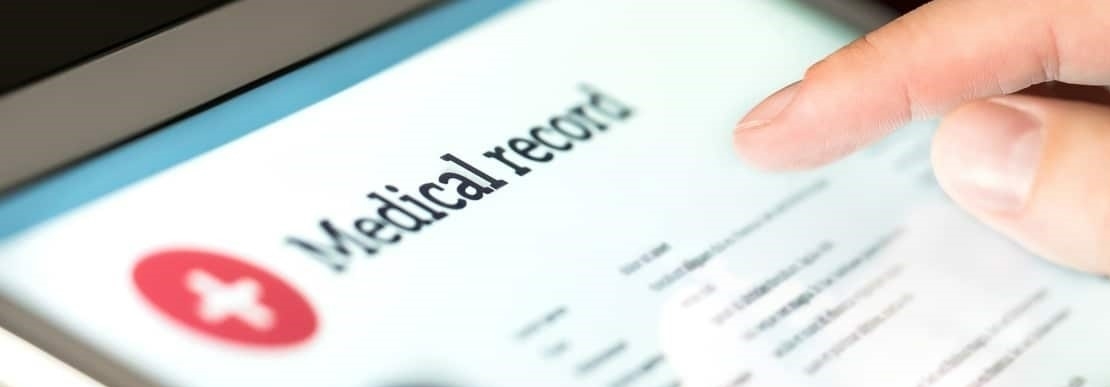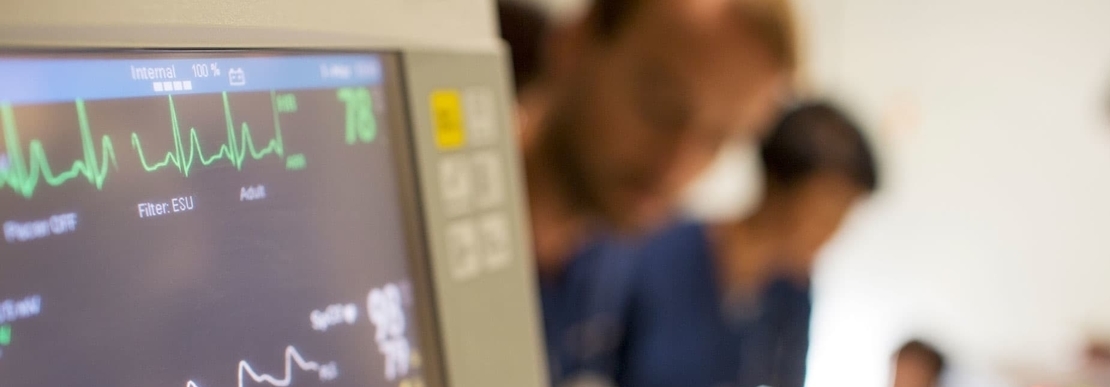


Computers are now a cruital part of the medical feild, from keeping track of patients records to running and viewing MRI scans
Today, more than ever, peoples health relies upon the correct function of computers and computer systems. This begins at home with online symptom checkers and continues throughout in GPs, hospitals and clinics
Databases, digital communications and machine learning all contribute to the task of keeping our country healthy
For example, heart rate, breathing and blood oxygen levels. This allows the medical professionals to spend more time treating patients rather than having to constantly monitor everyone. And if levels get into dangerous levels, they can be alerted quickly. Different inputs are used to measure these and each my be interpreted differently. For example, to measure blood oxygen levels, a light is shone onto small blood vessels in the paitents fingertip using a small machine. The oxygen reflects some of the light back, the level of light detected back relates to the amount of oxygen so must be computed in this way. Blood flow (heart rate) is measured in a similar way; by detetcting wavelengths reflected back - this is called photoplethysmography. With the advancements in technology, both these measurements can now be taken at home on a small wearbale device: detetction data is complied with data from the accelerometer and put through algorithms to determine and output correct results the user can understand.
Video calls and telephone appointments have become more and more prevalent due to the pandemic and means patients dont have to travel to an appointment. Further more, the developments of electronic messaging through emails and other apps allow for instant tranfer of messages between doctors and pracitces - espically important in time sensitive tasks which the medical staff deal with daily. This ease of communication also allows for GPs and hospitals to form 'medical groups' - group of centres that are linked togther. This means a patient signs up for one doctor but then has the flexability of going to all the clinics in the group; as data is shared between them all electronically (kept on central server they can all connect to). This also means that different pracitices can specialize and the paitent can go to the appropriate one to get the best advice and treatment.
Not only does this mean that data on patients can be almost immediatley accessed as they come in, but this data can be accessed all across the country, and even by the patient themselves through the NHS app. This makes travelling around the country or moving doctors much easier as all data is stored centrally so doesn't have to be manually moved to be accessed. It also helps patients as it ensures they can rememeber and order repeat prescirptions, and also look at their history and appointments to come, all from the comfort of their own home as this centrally stored data can be access through the NHS app. As medical staff don't need to trawl through folders of information, they can spend more time saving lives!
Computer programs are constantly used in hospitals in order to interpret data collected by machines like MRIs, so that it can been shown in a way that can be understood by humans e.g. showing an image of brain scan.
How does an MRI scan work? Powerful magents create a strong magnetic feild that forces protons in the body to come into order (align with the field) When a radio frequency current is puled through the patient, the protons are stimulated. When the radiofrequency feild is turned off, sensors detect the enegry release from these protons. Of course, a person would not be able to understand this data, so computer programs tranform it into 3D models that can be studied. Without computers to control the machines and produce an understandable output, we would know much less about the body.
Cloud computing means that the resources of another computer can be accessed on demand. This means that healthcare providers aren't forced into having to pay for large, powerful computers that they may not need all the time. They can pay just for what they need, or invest in one computer that can be shared with other practices through the cloud. It also means that large data anaysis can be performed without the need of large computers, healthcare providers can just pay for cloud computer power when they need it. The use of big data anslytics and AI algorithms on the cloud can considerably help medical research and more personalized car plans.
Due to the large range of similar symptoms relating to a wide range of diseases and problems, it can be very difficult to pin point what the issue is. Often a patient is guided through a series of questions leading to a final result, or natural language processing can be used to understand a patient's description of their symptom
Machine learning is used to predict symptoms and change quesitions asked, based on previous situations. This means that symptoms can be more accuratley guessed and done in a shorter time. This means patients are more likely to be recommended correct treatment - this is espcially important if symtoms suggest a severe condition. As patients can do this all from the comfort of their own home, they are more likely to do it and saves time talking to a doctor if urgeny care is requried. Also computers can hold a bigger bank of data than a doctor or nurse can in their heads, so any more obscure conditions wouldn't be forgotten.

In 2018, my uncle Fred was rushed to hospital after a suspected blood clot in the brain. It was too long after the usual window for the pescription of blood clotting drugs as usually after this time they woudln't work as well and could cause excessive bleeding in the brain. However they took him for an MRI and after studying the results, the doctors decided that the drugs could still work. He was given them, they worked, his life was saved, and he was discharged soon after.
In this situation many of the above uses of computers were applied: